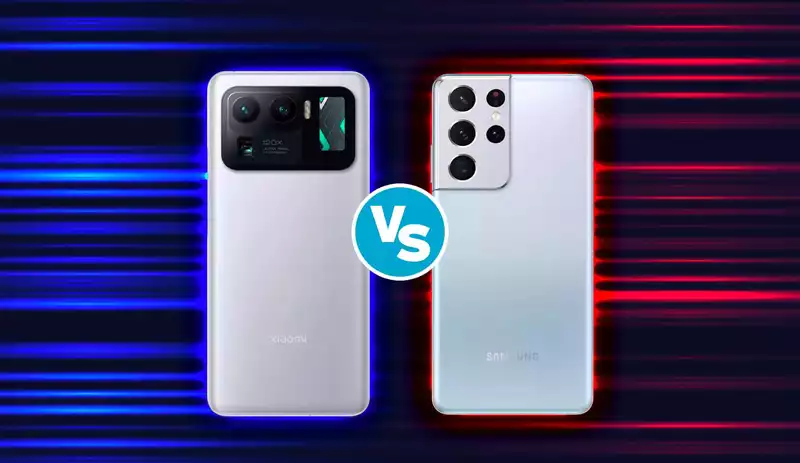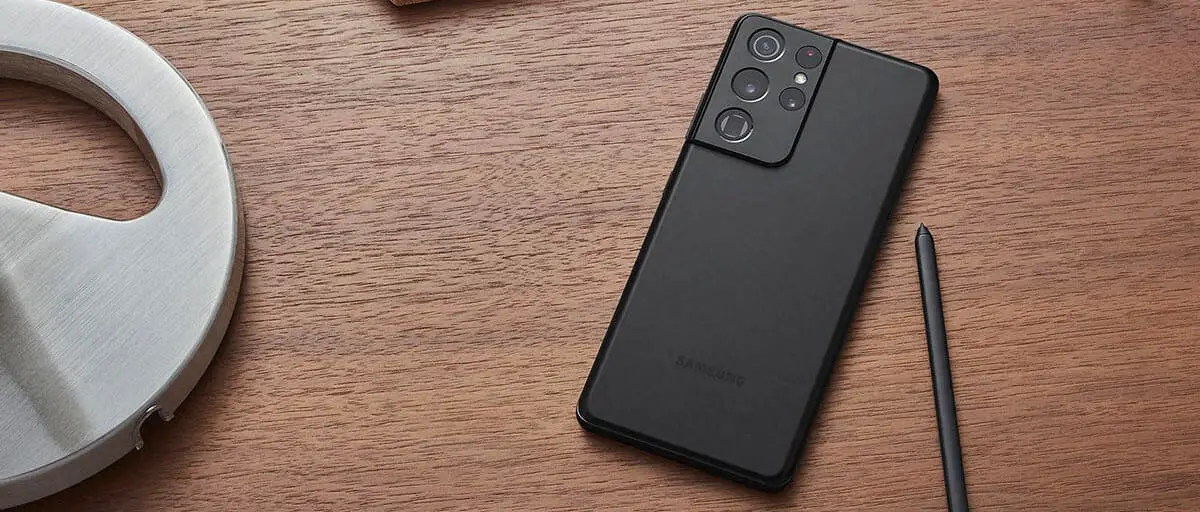You can also be interested in these:
- Google Pixel 6 will copy Samsung Galaxy S21 features
- Full honest Samsung Galaxy Tab A6 review
- How to change your security PIN in Samsung devices
- How to connect Samsung Galaxy Note 8 to PC
There is no doubt about we have here the two most surprising mobiles of 2021 in terms of features and technology, leaving way behind the folding phones and any other kind of non-flippable body mobile that we have known. Both the Xiaomi Mi 11 Ultra and the Samsung Galaxy S21 Ultra are the top-notch technological exponents, and today we compare them to see which one of them offers you the most value or benefits compared to the investment.

These are two mobiles that, technology wise, represent the most advanced options or the highest tier value in the market, with unique and unprecedented functions in both cases. We are not going to choose the best of both, because it would not be fair, but we will drill down its features and identify their strengths and weaknesses.
Screen and dimensions
Xiaomi and Samsung are two of the largest mobiles manufacturers nowadays. They focus on giving the best possible alternatives in the market and one of the most notorious aspects on mobile phones is the screen display. Their screens reach almost the seven inches, which is unprecedented, technically speaking. We are talking about AMOLED panels in both phones, with an aspect ratio of 20: 9.
The screen on the Xiaomi is 6.81 inches, and on the other hand the Samsung’s is 6.8 inches, both cases with a QHD + resolution of 1440 × 3200 pixels, very close to 4K. Both have a refresh rate of 120Hz, as well as HDR10 +. An important detail is that both screens are curved on all four sides.

The screen display on the Chinese mobile is somewhat a brighter screen, with a maximum peak of 1700 nits of brightness, while the Samsung offers 1500 nits. Both screens are protected by Gorilla Victus Glass, which offers the best protection against bumps and scratches on the market. As you know, the Xiaomi Mi 11 Ultra is characterized of having a secondary screen in the camera module, with AMOLED technology and a size of 1.1 inches, in fact it is the same screen as the Xiaomi Mi Band 5.
We can use it as a rear camera viewfinder to take selfies with maximum quality. We are facing two large and heavy mobiles, in fact they are similar in size, with dimensions of 164.3 x 74.6 x 8.4 mm with the Xiaomi, and 165.1 x 75.6 x 8.9 mm with the Samsung, being the latter a little bit thicker. The Xiaomi is somewhat heavier, with 234 grams, while the Samsung weighs 227 grams.
Specs, processor and memory
These two brands put “all the meat on the grill” in terms of technology. There is another aspects that literally defines the performance of the unit, becoming one of the most important components of the mobile. We are talking about the processors, and in this area you just have to get this right. The Xiaomi has a Snapdragon 888 processor with 5G connectivity, the most powerful among Android mobiles in 2021, and hence the reason it has a result of 688,000 points in AnTuTu.
On the other hand, the Samsung Galaxy S21 Ultra integrates an in-house built processor, the Exynos 2100, which this year has taken a great leap in performance, and worthy contendant with 657,000 points in AnTuTu, essentially at the same level of the Xiaomi. Regarding the RAM, the Xiaomi Mi 11 Ultra has 12GB, just like the Samsung. They both also have 256GB of internal storage, which in neither case can be expanded.
Camera
These two devices shine with a light on their own when it comes to camera features. Xiomi unveiled the triple camera, a new 50 megapixel main sensor (from Samsung), with an aperture of f/2.0 and a large pixel size of 1/1.12 ″. It has the largest secondary sensor on the market, with a 48-megapixel telephoto and f/4.1 aperture, as well as a 48-megapixel f/2.2 ultra-wide angle.

On the opposite corner, Samsung offers four sensors, the main one being a large 108 megapixels with an aperture of f/1.8 and a pixel size of 1/1.33″. There is also a 10 megapixel f/4.9 periscope, as well as a 10 megapixel f/2.4 telephoto, and lastly there is also a 12 megapixel f/2.2 ultra wide angle. In front, the selfie camera is 20 megapixels and f/2.2 on the Xiaomi, while it is larger on the Samsung with 40 megapixels and f/2.2.
In terms of video recording, the maximum is achieved with 8K resolution at 24fps in both models, while in the selfie camera the Samsung goes up to 4K, the Xiaomi remains behind with 1080p.
Battery, connectivity and software
Although both mobiles have the same a 5000mAh battery, in the case of the Xiaomi it charges faster, thanks to its charging power rate of 67W, which allows it to be fully charged in less than 40 minutes. The Xiaomi Mi 11 Ultra also offers the same charging power without cables, it is the only mobile that is able to do that, as of the date of this article. On its side, the Samsung is only 25W. Both can be charged wirelessly.
They both have Wifi 6, Bluetooth 5.2, as well as dual-band GPS, which is much more accurate. We can also find in both models NFC connectivity to make mobile payments, USB type C connector, and an integrated fingerprint reader under the screen. Each one has the latest Android 11 version, one under MIUI 12.5 and the other under One UI 3.1. Finally, both are waterproof thanks to the IP68 certification.
Price and final remarks
These are not cheap mobile options by any mean. It is logical to think the price will be a little steep knowing that these are the 2 mobile that offer the most advanced features and performance on the market right now. We are talking that the Xiaomi Mi 11 Ultra with 12GB of RAM and 256GB of internal storage has a price of $1,470 USD, while the Samsung Galaxy S21 Ultra has a higher cost, of $1,600 USD, with the same 12GB of RAM and 256GB of internal storage.
The Xiaomi Mi 11 Ultra is a little cheaper. Of course, there has been times on which the Samsung Galaxy S21 Ultra has reached the same price of the Xiaomi through promotions and offers. Nonetheless, it is clear that the Xiaomi offers a best price-performance proposition when compared to the Samsung Galaxy S21 Ultra. Especially taking into account its camera, which has been designated as the best on the market by DxOMark, and which also includes that unprecedented secondary screen in its module. This would already be reason enough to choose the Xiaomi for a lower price. All that, with the added advantage of a faster charging capability.
Samsung on the other hand, sells a little bit of its enormous brand awareness and recognition on every mobile. There is a small premium we pay only for the fact is a well known and stablished brand. Another advantage it has is the 4K video recording of its selfie camera. Also in its large 108 megapixel sensor, and the fact that is somewhat lighter. In general, these are two mobiles that will give us a similar performance in both cases, and that only differ in details. If your thing is to have the most innovative solution, without a doubt the Xiaomi takes the cake with that secondary screen. In turn, if you select Samsung you will be also getting a splendid phone, with its genuine curved screen, a huge 108 megapixel camera and Samsung’s premium value. Two great mobiles, regardless of which one you choose.
More stories like this
- Google Pixel 6 will copy Samsung Galaxy S21 features
- Full honest Samsung Galaxy Tab A6 review
- How to change your security PIN in Samsung devices
- How to connect Samsung Galaxy Note 8 to PC
- Samsung Galaxy A52, A52 5G and A72 almost high-range
- Samsung Galaxy S22 Overview